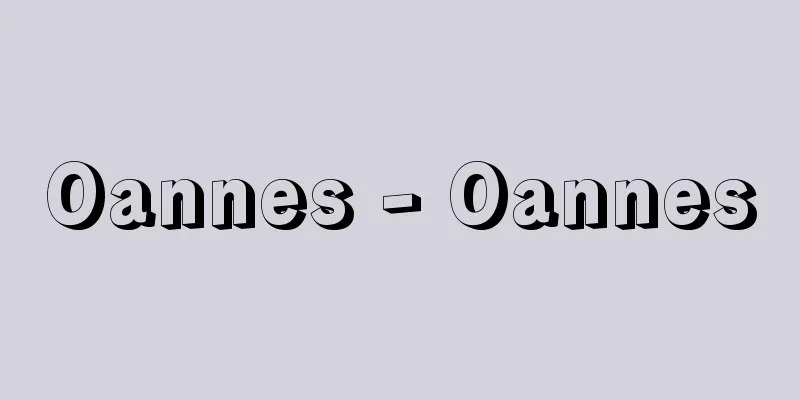Renaissance art

|
In art history, the Renaissance is a concept of a style and period of art that developed in European art in the 15th and 16th centuries, particularly in Italy. Renaissance in art historySince the 19th century, the term Renaissance has generally been translated as a literary revival, and has emerged as a concept to grasp a wide range of European cultural phenomena. It refers to a pan-European movement from the 14th to the 16th centuries that sought to create new culture in all areas, including literature, art, and thought, with the art and culture of ancient Greece and Rome as its ideal. However, the prevailing view in art history is that it is used narrowly to refer to Italian art from 1420, when the architect Brunelleschi began construction of the dome of Florence Cathedral, the first time he realized the results of his research into antiquity, to around 1520-1530, when classical art transitioned to Mannerism. In this case, the 1400s are called the Early Renaissance, and the 1500s are called the High Renaissance. The French word Renaissance comes from the Italian word rinàscita, which means "rebirth, resurrection." Since the 14th century poets Petrarch and Boccaccio used the word to mean the revival of lost ancient arts in their new era, it has been passed down as an Italian humanist view of history. It can be seen in the works of 15th century artists such as Ghiberti, Alberti, and Filarete. In particular, the 16th century artist Giorgio Vasari used the term rinascita several times in his Lives of the Artists (first published in 1550), stating that the fine styles of ancient art had once declined due to the invasion of barbarian tribes and the iconoclastic movement of medieval Christianity, and that the crude Maniera Tedesca (German style) and the stiff Maniera Greca (Byzantine style) had dominated, but that the excellent artistic spirit of antiquity was finally revived with the emergence of painters such as Cimabue and Giotto, and sculptors such as Nicola Pisano and Arnolfo di Cambio in the Tuscany region of Italy from the second half of the 13th century. Moreover, he clearly pointed out that this revival of antiquity was due to the study of the classics and the promotion of naturalism based on the imitation of nature. Since Michelet and Burckhardt in the 19th century described the Renaissance as an age of "discovery of man and the world," the concept of the Renaissance has expanded beyond the simple revival of antiquity to a glorious concept in cultural history that heralded the arrival of a new image of man and a new view of the world that broke with the Middle Ages. However, today the concept of the Renaissance has become a subject of lively debate involving the whole of European culture over its relationship with the Middle Ages, and the Carolingian dynasty and the culture of the 12th century are also considered to be part of the Renaissance, making it a complex and ambiguous concept. However, as we saw with Vasari, the Renaissance was originally established in the Italian artistic climate, and it must be said to be a concept that was formed as a result of artistic phenomena that were born from the historical awareness and artistic will of Italian artists of that period. [Kamihira Mitsugu] The dawn of Renaissance artIn Italy, which was originally founded on the cultural foundations of classical antiquity, the revival of antiquity was not suddenly recognized in the 15th century. The seeds of a new art were already apparent early on in medieval Gothic art, which people at the time viewed as antagonistic. The influence of medieval art from the north extended to Tuscany in central Italy, but from around the 13th century the art of this region gradually began to show its own unique characteristics. Spurred by the rise of the new religious views of the Dominican and Franciscan orders, the construction of churches and the production of pulpits, panel altarpieces, and murals flourished all over the country. The sculptor Nicola Pisano studied ancient works and restored classical grandeur and harmony through clear composition and a grasp of the mass of the human body. Giovanni Pisano added realistic portrayals of figures and dynamic spatial expression to his father Nicola's style, taking a step towards naturalism. Arnolfo di Cambio was also active in architecture, but he advocated a frank form of sculpture that embodied simple forms and gentle emotions. In painting, Cimabue injected realistic images into the Byzantine-style religious paintings of the time, enhancing the vitality of human figures. The Roman painter Pietro Cavallini revived the ancient tradition by reviving the fresco technique. Giotto, who established the foundation of the Florentine school of painting in the 14th century, used his rich natural emotion to give realistic presence to the expressions and postures of his figures, and depicted depth and light and shade in the space behind them, while creating rational balance and order in his paintings, achieving a harmony between intellect and emotion. It can be said that he predicted the unification of classical principles of form with the artistic spirit of a new era that approached the truth of humanity and nature. New stirrings in art also took place in Siena. Duccio, who painted many Madonnas and Child images, was characterized by his elegant sensibility and sweet colors, and demonstrated his ability to illustrate stories. Simone Martini followed suit, establishing a magnificent secular style of painting that exuded the ups and downs of human emotion and exotic charm in the rhythm of his lines. The Lorenzetti brothers, Pietro and Ambrogio, poured raw human passion and gaze into not only religious paintings but also allegorical themes rooted in patriotic civic consciousness, raising interest in everyday life and scenes while also developing three-dimensional spatial depictions. These artistic trends in Tuscan cities up until the first half of the 14th century are called Proto-Renaissance, as they preceded the Early Renaissance of the 15th century. However, after the onset of the Black Death (plague), European society in the second half of the 14th century was consumed by extreme pessimism and ideas of salvation, and Italian art reflected the conflict and antagonism between secular realism and ascetic transcendentalism at the time. At first glance, the direction of the Renaissance seems to have stagnated or gone backwards, but on the contrary, it strengthened its carefully realistic attitude toward familiar reality and decorative tendencies, eventually merging with the trend of the late Gothic International Style, which was dreamy yet delicately sweet and developed mainly in the courts of European cities for about 70 years around 1400. [Kamihira Mitsugu] Early Renaissance artIt was in 15th-century Florence that the new age of art that Giotto predicted began to take shape. The city, with its political and economic prosperity as a backdrop, nurtured a trend towards humanism and respected human personality and individuality. Artists formed guilds and based themselves in workshops, all of whom pursued the study of ancient works and the exploration of realistic nature. In response to the citizens' high interest in art and their vigorous public and private requests, architecture, sculpture, painting and other creative fields all interacted and became more active. Brunelleschi studied ancient architecture in Rome, elucidating various structural techniques and mastering the essence of classical beauty. He applied the results to the churches of Florence, achieving a clear and balanced proportion and unity of each part in the realistic and limited urban space, proposing the ideal of harmony in Renaissance architecture. Michelozzo di Bartolomeo and Alberti, who followed him, enthusiastically pursued ideas based on ancient styles in the architectural designs of palaces and churches. In the second half of the 15th century, the new style established in Florence spread throughout Italy, causing a great sensation. Furthermore, through Bramante and Pietro da Lombardo, it spread to Milan, Venice, and Rome from the end of the 15th century to the 16th century, and showed its own unique development according to the environment and tastes of each city. Sculpture, like architecture, is closely related to ancient examples, and contemporary sculptors were greatly inspired by both the style and technique of the ancients. Nanni di Banco, Ghiberti, Brunelleschi, and Jacopo della Quercia of Siena began research at an early stage in the 15th century, and competed to tackle the various problems of sculptural expression of the human figure. Donatello, in particular, pursued a realistic depiction of the human body alongside his study of ancient times, and sought to fuse the classical spirit with naturalism, breaking away from the vestiges of Gothicism and bringing about a new revolution in sculpture. Around this time, sculpture was gradually freed from its subordinate position to architecture, and was establishing the mass-like three-dimensionality, free spatiality, and independent monumentality that are inherent to sculptural art. In addition to religious themes, portraits, equestrian statues, and pagan themes also appeared in large numbers, and a wide variety of formative expressions were produced using a wide range of materials such as wood, marble, bronze, and terracotta. Donatello was followed by Robbia and his school, Mino da Fiesole, Settignano, Rossellino, etc. In the second half of the 15th century, the progressive Pollaiuolo brothers, Verrocchio, Bertoldo and others furthered realism with their anatomical explorations, the depiction of movement and psychological portrayal. The flowering of the Renaissance in painting signified the overcoming of the International Gothic style and the revival of Giotto's artistic spirit. Its groundbreaking innovator was Masaccio in the 1420s. Having learned perspective from Brunelleschi and strict realism from Donatello, he depicted realistic figures and landscapes with a sense of volume in a plastic space filled with light and air. His tangible human bodies overflowing with a sense of real life, and his expansive unified compositions using rational chiaroscuro and perspective, demonstrated the dignity of human beings and the artistic value of natural space in a new era. After that, many painters followed in Masaccio's great footsteps from the first half to the middle of the 15th century. These include Fra Angelico, who introduced naturalism into religious paintings and depicted a world of pure bliss, Uccello, who was absorbed in the study of geometric perspective and created a dreamlike realm of painting, Fra Filippo Lippi, who transferred secular human emotions to the Virgin Mary, Veneziano, who focused on the rational relationship between light and color, Castagno, who poured his keen emotions into thorough realism, Gozzoli, who painted magnificent genre scrolls, and Baldobinetti, who painted delicate human bodies and landscapes. In the second half of this century, there were the Pollaiuolo brothers and Verrocchio, who carried natural observation into scientific research such as human dissection, and Ghirlandaio, who maintained objective realism in the depiction of portraits and genres. And Botticelli, a painter of intense passion, upheld the forms and ideals of Renaissance art, but also imbued his style with the mysterious poetic charm of late Gothic, attempting a mysterious reconciliation between ancient and medieval times. In paintings outside of Florence, there are Perugino, Pintoricchio, and Piero della Francesca, who studied perspective and human proportions and used sophisticated colors to create a sophisticated style of painting. In northern Italy, Mantegna, Cosmetura, and Cossa are noteworthy, as are those who assert their own artistic individuality through their robust portrayals of figures that make full use of perspective. In addition, the Bellini school, Antonello da Messina, Crivelli, and others also produced unique works. [Kamihira Mitsugu] High Renaissance artEarly Renaissance artists studied ancient works enthusiastically, meticulously observed the subjects of their depictions, explored the anatomy of the human body, pursued the optical science of light and shade, and also sought to clarify the geometric laws of space, i.e., the subject of perspective. They approached these subjects with a rational and scientific attitude. This imitation of nature, that is, the increase in objective realism of humans and nature, also meant the revival of ancient art and aimed to reach classical idealism. However, the path to a higher classical art was finally opened by Leonardo da Vinci. He excelled not only in the plastic arts of painting, sculpture, and architecture, but also in scientific research in many fields, making him the most typical "universal genius" of Renaissance artists. And the innermost part of artistic creation was always inseparably linked to scientific thinking. Leonardo aimed for the universal by eliminating the accidental, and completed the ideal classical style by unifying the deep subjective spiritual content with the objective subject of depiction. His art attracted the attention of people in Italy in the early 16th century, and he began to attract many younger artists. The classical style also spread, inspired by the ancient sculptures that were being excavated in Rome at that time. Michelangelo also used his passionate and powerful sculpting skills to express powerful and eternal human figures in his paintings and sculptures. He instead leaned toward a subjective ideal form that suppressed realism. The young Raphael could be said to have been immersed in the High Renaissance his entire life, absorbing the great achievements of the arts of the previous two and assimilating them into his own style, while also integrating the knowledge he gained from his active study of antiquity to establish an ideal form of human beauty. Other notable painters include Fra Bartolomeo and Sarto in Florence, Sodoma in Siena, Correggio and Dosso Dossi in Emilia, and especially Giorgione and the early Titian and Piombo in Venice. [Kamihira Mitsugu] Renaissance ArtThe High Renaissance was a surprisingly short period of time. The center of Renaissance art had already begun to shift from Florence to Rome, and then to Venice. This trend intensified as the era progressed, moving from Mannerism, established in the 1520s, to the Baroque style. At the same time, the standard ideal beauty of the classical style of the High Renaissance, which emphasized harmony, balance, and stability, became the target of backlash. However, in the development of European art since the early modern period, there have been several returns to classicism, and its brilliance has never faded. Regarding Italian Renaissance art and the art of other European regions such as Flanders, Germany, and France, which developed in parallel with each other during the same period, some view the two as polarized phenomena occurring in the late Middle Ages or early modern period, but it is difficult to apply the concept of Renaissance as a "revival of antiquity" to the latter. [Kamihira Mitsugu] "Comprehensive World Art Series 13-15: Renaissance Art I-III" edited by Masui Zenro (1976, Gakken)" ▽ "History of Italian Renaissance Art, volumes 1 and 2, by M. Dvorak, translated by Nakamura Shigeo (1966, Iwasaki Bijutsusha)" ▽ "Art of Mankind, Volume 2, Vol. 5: Italian Renaissance 1400-1460" by L.H. Heidenreich, translated by Maekawa Seiro (1975, Shinchosha)" ▽ "World Architecture 6: Renaissance/Mannerism" edited by Suzuki Hiroyuki (1982, Gakken)" ▽ "Biographies of Renaissance Artists" by Vasari, translated by Hirakawa Sukehiro and Kotani Toshiji (1982, Hakusuisha)" Probably circa 1320, tempera , Metropolitan Museum of Art Giotto's "Adoration of the Magi" 1290-1300 Tempera, Metropolitan Museum of Art Duccio's "Madonna and Child" Circa 1470 Copperplate print Paris Museum Antonio Pollaiuolo: "The Nudes" 1475-1485 Tempera ( Collection of the Chicago Art Institute ) Botticelli's "Madonna and Child with Angels" 1470 Oil painting (Collection of the Metropolitan Museum of Art ) Antonello da Messina: The Young Man Tempera, circa 1480, Rijksmuseum, Amsterdam Crivelli "Mary Magdalene" Altarpiece. 1504, oil painting . Metropolitan Museum of Art . Raphael's "Madonna and Child on the Throne with Five Saints" 1565-1570 Oil painting, Metropolitan Museum of Art Titian: Venus and the Lute Player... Source: Shogakukan Encyclopedia Nipponica About Encyclopedia Nipponica Information | Legend |
|
美術史におけるルネサンスは、15、16世紀のヨーロッパ美術、ことにイタリアで発展した美術の様式および時代区分の概念である。 美術史におけるルネサンス19世紀以降、ルネサンスRenaissanceは一般に文芸復興と訳され、広くヨーロッパの文化現象を把握する概念として登場した。そして古代のギリシア・ローマの芸術・文化を理想として、文学、美術、思想など、あらゆる領域で新しい文化を創造しようとした14世紀から16世紀に至る全ヨーロッパ的な運動をさした。しかし、美術史の通説では、1420年、建築家ブルネレスキが古代研究の成果を最初に実現したフィレンツェ大聖堂円蓋(えんがい)の工事が起工されたころから、1520~1530年ごろに古典的美術がマニエリスムに移行した年代までのイタリア美術に限定して狭く用いる。その場合とくに、1500年を境に1400年代を前期ルネサンス、1500年代を盛期ルネサンスと称する。 ルネサンスというフランス語は、「再生、復活」を意味するイタリア語のリナシタrinàscitaに由来する。古く14世紀の詩人ペトラルカやボッカチオらが、失われていた古代の芸術を彼らの新時代によみがえらせる意味にこのことばを用いて以来、イタリアの人文主義的史観として受け継がれていった。15世紀の美術家ギベルティやアルベルティ、フィラレーテらの著作にそれがみられる。とくに16世紀の美術家ジョルジョ・バザーリは、その『美術家列伝』(初版1550)で数回リナシタの語を使って、古代美術のよい様式がいったん野蛮な民族の侵入や中世キリスト教による偶像破壊運動のために衰退し、さらに粗野なマニエラ・テデスカmaniera tedesca(ドイツ風様式)や生硬なマニエラ・グレカm. greca(ビザンティン風様式)が支配していたが、13世紀後半からイタリアのトスカナ地方で画家のチマブーエやジョット、彫刻家のニコラ・ピサーノやアルノルフォ・ディ・カンビオらが出現して、ようやく古代の優れた芸術精神が復活されたと述べた。しかも、この古代の再生が古典の研究と自然の模倣に立脚した自然主義の推進によることも明確に指摘していた。 かつて19世紀のミシュレやブルクハルトがルネサンスを「人間と世界の発見」の時代と説いて以来、ルネサンスは単なる古代の再生というだけでなく、中世と決別したむしろ新しい人間像や世界観の到来を告げる輝かしい文化史上の概念として拡大された。しかし、今日ではかえって、ルネサンスは中世との関係をめぐってヨーロッパ文化全体を巻き込んだ活発な論議の対象となり、またカロリング朝や12世紀の文化にもルネサンスがとなえられ、複雑かつ多義的な概念となっている。しかし、バザーリにみたように、ルネサンスは本来イタリアの美術風土に成立し、しかもこの時期のイタリアの美術家たちの史的認識と芸術意志が生み出した、美術現象を契機として形成された概念といわねばならない。 [上平 貢] ルネサンス美術の曙もともと古典古代の文化的基盤にたつイタリアでは、古代の再生は15世紀に突然に自覚されたわけではない。すでに新しい美術の萌芽(ほうが)は、当時の人々が対立的にとらえていた中世のゴシック美術のなかに早くから現れた。北方の中世美術の影響はイタリア中部のトスカナにも及んだが、この地方の美術は13世紀ごろからしだいに独自な様相を示し始めた。ドミニコ会やフランチェスコ会の新しい宗教観の興隆に促されて、教会建築の造営をはじめ、各地で説教壇、板絵祭壇画、壁画の制作などが活況を呈した。 彫刻のニコラ・ピサーノは、古代作品の研究から、明晰(めいせき)な構図や人体の量塊的把握を通じて古典的な壮大さや調和を回復した。ジョバンニ・ピサーノは、父ニコラの作風に写実的な人物描写や動的な空間表現を加えて、自然主義への道を一歩進めた。アルノルフォ・ディ・カンビオは建築にも活躍したが、簡明な形態と温雅な心情を宿す赤裸々な造形性を主張した。絵画では、チマブーエが当時のビザンティン風の宗教画に現実的イメージを注入し、人間像にほとばしる生命感情を充実させた。ローマの画家ピエトロ・カバリーニはフレスコ画法を再興し、古代の伝統をよみがえらせた。14世紀にフィレンツェ画派の基礎を確立したジョットは、豊かな自然感情によって、人物の表情や姿態にリアルな存在感を与え、背後の空間に奥行と明暗を描出するとともに、画面に合理的な均衡と秩序を構成し、知性と感情の融和を達成した。彼によって、古典的な造形原理と、人間および自然の真実に迫る新時代の芸術精神との統一が予言されたといえる。シエナにも美術の新しい胎動がおこった。多くの聖母子像を描いたドゥッチョは、優雅な感受性と甘美な色彩を特色とし、物語的図解力を発揮した。それを受けたシモーネ・マルティーニは、線のリズムに人間感情の起伏と異国的な情趣を漂わせた壮麗な世俗的画風を樹立した。またピエトロとアンブロジオのロレンツェッティ兄弟は、宗教画のみならず愛郷的な市民意識に根ざした寓意(ぐうい)的主題にも、人間のなまな熱情や視線を注ぎ、日常の生活や情景への関心を高める一方、空間描写を三次元的に進展させた。 14世紀前半期までのこうしたトスカナ諸都市の美術動向は、15世紀の前期ルネサンスに先行する美術活動として、とくにプロト・ルネサンスとよばれる。しかし、黒死病(ペスト)の来襲を転機として14世紀後半のヨーロッパ社会は極端な厭世(えんせい)と救済の思想に覆われ、イタリア美術もそのころの世俗的な写実主義と禁欲的な超越主義の対立と相克を反映した。一見ルネサンスの方向は停滞あるいは逆行したように思われるが、かえって身近な現実に対する入念な写実的態度や装飾的傾向を強め、やがて1400年前後に約70年にわたってヨーロッパ各都市の宮廷を中心に展開した、夢幻的かつ繊細甘美な後期ゴシック国際様式の風潮に合流していった。 [上平 貢] 前期ルネサンスの美術ジョットが再生を予告した新時代の芸術が明確にその骨格をみせ始めたのは、まず15世紀のフィレンツェであった。この都市は、政治的・経済的な繁栄を背景に人文主義の思潮をはぐくみ、人間の人格と個性を尊重した。美術家たちは組合をつくり工房を拠点にして、こぞって古代作品の研究や写実的な自然の探究を進めていく。市民たちの美術に対する高い関心と公私にわたる旺盛(おうせい)な注文に応じて、建築、彫刻、絵画などあらゆる造形分野が互いに呼応しながら活性化していった。 ブルネレスキは、ローマで古代建築を調査して各種の架構技術を解明するとともに、古典的構成美の本質を体得した。その成果をフィレンツェの教会建築群に適用して、現実的な有限の都市空間に均斉のとれた明晰な各部分の比例や統一を達成し、ルネサンス建築の調和的理想像を提起した。彼に続いたミケロッツォ・ディ・バルトロメオやアルベルティらは、宮殿や教会の建築設計に古代様式に基づく構想を熱心に追求した。15世紀後半には、フィレンツェで成立した新様式はイタリア各地に波及し大きな反響をよんだ。さらにブラマンテやピエトロ・ダ・ロンバルドらを通して、15世紀末から16世紀にかけてミラノ、ベネチア、ローマへと輪を広げ、それぞれの環境と趣味に応じて独自の展開をみせた。 彫刻は建築とともに古代の作例との関連が深く、作風と技法の両面から当代の彫刻家は多大の示唆を受けた。15世紀初頭のナンニ・ディ・バンコ、ギベルティ、ブルネレスキ、シエナのヤコポ・デッラ・クエルチアらが早くも研究に着手し、競って人物の彫塑的表現の諸問題に取り組んだ。とくにドナテッロは、古代研究と並んで人体の写実的追求を重ねて、古典精神と自然主義との融合を図り、ゴシックの名残(なごり)を脱却して彫刻に新しい変革をもたらした。このころ、彫刻はしだいに建築に対する従属的地位を解かれ、彫塑芸術本来の量塊的な立体性と自由な空間性、そして独立した記念碑性を確立しつつあった。宗教的主題のほかに肖像や騎馬像、異教的主題も数多く登場し、木、大理石、ブロンズ、テラコッタなど多様な素材を駆使して、多彩な造形表現が繰り広げられた。ドナテッロに続いてロッビアとその一門、ミーノ・ダ・フィエーゾレ、セッティニャノ、ロッセリーノなどが活躍した。15世紀後半には進歩的なポライウオーロ兄弟、ベロッキオ、ベルトルドらが解剖学的探究や運動表現、心理描写によって写実主義をいっそう促進させた。 絵画におけるルネサンスの開花は、国際ゴシック様式の克服とジョットの芸術精神の再興を意味した。その画期的な革新者は1420年代のマサッチョであった。ブルネレスキから透視図法を、ドナテッロから厳格な写実主義を学んだ彼は、光と空気の充満した造形空間に量感豊かな実在的な人物や風景を描出した。現実の生命感にあふれた可触的な人体、合理的な明暗法と遠近法による広壮な統一的構図は、新時代の人間の尊厳と自然空間の芸術性を実証した。その後、15世紀の前半から中葉にかけてマサッチョの偉大な足跡を追う多くの画家が輩出した。それは、宗教画に自然主義を導入して清純な至福の世界を描いたフラ・アンジェリコ、透視図法の幾何学的研究に熱中して夢幻的な画境を築いたウッチェロ、聖母にも世俗的な人間感情を移入したフラ・フィリッポ・リッピ、光と色彩の合理的な関係に着目したベネチアーノ、徹底した写実に鋭敏な情感を注いだカスターニョ、壮麗な風俗絵巻を描いたゴッツォリ、精妙な人体と風景を描いたバルドビネッティらがそれである。この世紀後半には、自然観察を人体解剖などの科学研究にまで進めていったポライウオーロ兄弟やベロッキオ、肖像と風俗の描写に客観的な写実主義を貫いたギルランダイヨがいる。そして激しい情念の画家ボッティチェッリは、ルネサンス芸術の形式と理念を掲げながら画風に後期ゴシックの神秘な詩的情趣を宿し、古代と中世の不思議な和解を試みた。 フィレンツェ以外の地域の絵画では、中部イタリアにペルジーノ、ピントリッキョ、とくに遠近法と人体比例を研究し洗練された色彩を用いて格調の高い画風を形成したピエロ・デッラ・フランチェスカがいる。北イタリアでは、遠近法を駆使した堅牢(けんろう)な人物描写によって独自の芸術的個性を主張するマンテーニャをはじめ、コスメ・トゥーラ、コッサが注目される。このほかベッリーニ一門、アントネッロ・ダ・メッシーナ、クリベッリらもユニークな活動をした。 [上平 貢] 盛期ルネサンスの美術前期ルネサンスの美術家たちは、熱心な古代作品の研究、緻密(ちみつ)な描写対象の観察、人体の解剖学的探究、光と明暗の光学的追求、さらに空間に対する幾何学的法則性の解明、つまり遠近法の課題など、これらに合理的かつ科学的な態度で臨んだ。こうした自然の模倣、すなわち人間と自然に関する客観的な写実主義の増大は、同時に古代芸術の再生を意味し、さらに古典的な理想主義への到達を目標としていた。しかし、高次な古典的芸術への道はレオナルド・ダ・ビンチによってようやく開かれた。彼は絵画、彫刻、建築の造形芸術はもとより、多方面にわたる科学的研究にも秀で、ルネサンス美術家のもっとも典型的な「万能の天才」であった。そして、芸術創造の内奥はつねに科学的思考と分かちがたく結ばれていた。レオナルドは、偶然的なものを排除して普遍的なものを目ざし、客観的な描写対象に主観的な深い精神内容を統一させて理想的な古典様式を完成した。彼の芸術は16世紀初頭のイタリアで人々の注目を集め、後進の共鳴者を出すようになった。また、当時ローマで盛んに発掘された古代彫刻にも鼓吹されて、古典様式は広まっていく。ミケランジェロもこのころ、ほとばしる熱情とたくましい造形力を駆使して、力感あふれる永遠的な人間像を絵画や彫刻に表現した。彼はむしろ写実を抑えた主観的な理想形式に傾いた。若いラファエッロは全生涯を盛期ルネサンスに没入させたといってもよく、前二者の芸術から多大の成果を吸収して自らの画風に同化させる一方、進んで古代研究に従事して得た知見も総合して、理想的な人間美の形式を樹立した。ほかに画家ではフィレンツェのフラ・バルトロメオやサルト、シエナのソドマ、エミリアのコレッジョとドッソ・ドッシ、そしてとくにベネチアのジョルジョーネと初期のティツィアーノやピオンボの出現が注目される。 [上平 貢] ルネサンス美術の余映盛期ルネサンスは意外に短期間である。すでにルネサンス美術の中心地は、フィレンツェからローマへ、あるいはベネチアへ移りつつあった。1520年代に成立したマニエリスム、さらにバロック様式へと時代が下るにつれこの傾向はいっそう強まっていく。それとともに、盛期ルネサンスの古典様式の調和・均衡・安定を旨とする規範的な理想美は、かえって反発の対象となった。しかし、近世以後のヨーロッパ美術の発展には、古典主義への回帰が幾度かみられ、その輝きが消え去ることはない。 イタリアのルネサンス美術と同時代に並行して展開したフランドル、ドイツ、フランスなど他のヨーロッパ地域の美術について、この両者を中世後期ないし近世初期の分極現象とする見方もあるが、後者に本来の「古代の再生」としてのルネサンス概念を適用することは困難である。 [上平 貢] 『摩寿意善郎編『大系世界の美術13~15 ルネサンス美術I~Ⅲ』(1976・学習研究社)』▽『M・ドヴォルシャック著、中村茂夫訳『イタリア・ルネサンス美術史』上下(1966・岩崎美術社)』▽『L・H・ハイデンライヒ著、前川誠郎訳『人類の美術 第二期5 イタリア・ルネッサンス1400~1460』(1975・新潮社)』▽『鈴木博之編『世界の建築6 ルネサンス/マニエリスム』(1982・学習研究社)』▽『ヴァザーリ著、平川祐弘・小谷年司訳『ルネサンス画人伝』(1982・白水社)』 おそらく1320年ころ テンペラメトロポリタン美術館所蔵"> ジョット『東方三博士の礼拝』 1290~1300年ころ テンペラメトロポリタン美術館所蔵"> ドゥッチョ『聖母子』 1470年ころ 銅版画ParisMusées"> アントニオ・ポライウオーロ『裸人たちの… 1475~1485年 テンペラシカゴ美術研究所所蔵"> ボッティチェッリ『聖母子と天使』 1470年ころ 油彩メトロポリタン美術館所蔵"> アントネッロ・ダ・メッシーナ『若い男の… 1480年ころ テンペラアムステルダム国立美術館所蔵"> クリベッリ『マグダラのマリア』 祭壇画。1504年ころ 油彩メトロポリタン美術館所蔵"> ラファエッロ『玉座の聖母子と五聖人』 1565~1570年ころ 油彩メトロポリタン美術館所蔵"> ティツィアーノ『ビーナスとリュート奏者… 出典 小学館 日本大百科全書(ニッポニカ)日本大百科全書(ニッポニカ)について 情報 | 凡例 |
Recommend
Azlon (English spelling)
A general term for regenerated protein fibers made...
Seasonal roots - Seasonal roots
Year of death: Bunmei 1.8.11 (September 16, 1469) ...
human engineering
…In Europe, this field developed based on labor s...
Fornix conjunctiva - Fornix conjunctiva
…it allows smooth eye movement and blinking. The ...
Water Liner
...However, the cuttings scattered with the compr...
Engawa
…In Western cuisine, it is fried or served in gra...
The Record of Hisamichi Konoe
This is the diary of Konoe Hisamichi, a court nobl...
Ontang Gorge
...A tributary of the Yangtze River in the easter...
Securities analysis
Corporations raise funds by borrowing from financi...
Azuchi Castle Town
…In the castle towns of the Sengoku daimyo, there...
Nursing Care Certification Examination Board - Kaigoninteishinsakai
An institution established in a city or town that ...
Bodley, T.
...Thus, after the Protestant Reformation and the...
Neogene period
It is one of the geological time divisions, and i...
Bobcat - Bobcat (English spelling)
A mammalian animal of the order Carnivora and fam...
Bacillus thuringiensis
…However, so-called microbial pesticides that use...









